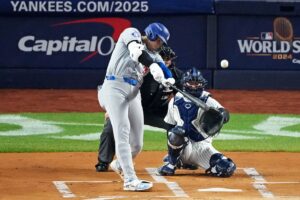The 2020 season for the Cincinnati Reds was an eventful one. They finished 31-29, which was good enough for third place in the NL Central, and even secured a playoff spot in the extended format. Coming into this season, before COVID-19, the Reds had lofty expectations. They added several pieces over the winter and looked poised for a deep run. Post COVID-19 suspension, though, they heavily underperformed. Let’s take a look at the season and break it down.
Lofty Expectations
The Reds were huge players in free agency in the offseason. They came in looking for another power bat in the outfield and a second baseman. The first domino to fall was the second baseman. Long time Kansas City Royals and short-time Milwaukee Brewers infielder Mike Moustakas signed with a 4-year, $64 million deal. He was a great flip from the division-rival Brewers and was supposed to add pop from that position. The second domino to fall was the power bat in the outfield. At the end of January, the Reds made a surprise splash and signed outfielder Nicholas Castellanos. He was another big flip, as he came from the division-rival Chicago Cubs.
The Reds also added Wade Miley to bolster the rotation, although it didn’t exactly pan out as he only appeared in six games all year due to injury. The Reds also added the first Japanese player in club history by signing Shogo Akiyama, who was known for his hitting and defensive prowess while roaming center field in Japan. They brought back arguably the best rotation in baseball, which included Trevor Bauer, Sonny Gray, and Luis Castillo. The Reds looked set for success, but when COVID-19 cancelled the rest of spring training, it honestly hurt the team.
60-Game Season? We Got This Handled
Because of the global pandemic, the Major League Baseball season didn’t start until late July, with only a few tune up games before the shortened 60-game season ramped up. Because of their stout roster makeup, the Reds were ahead of game in terms of being able to run the table. They had the offense, the starting pitching, and the relief pitching — or so they thought. Undoubtedly, the starting pitching started off hot. Sonny Gray got the start and whipped the Tigers into submission all game long. The newcomers on the offense pitched in a little too, as Moustakas blasted a homer and the Reds started off 1-0 on the year. From there, it was rocky, and very rocky indeed.
Starters Shine, Bullpen struggles
Sonny Gray, Trevor Bauer and Luis Castillo came out hot, and they looked phenomenal. It has been said that pitching excelled so well this year because of the abbreviated time offensive players got to get ready. Don’t tell that to the Reds bullpen, though. Through the first month of the season, the starters for Cincinnati carried an anemic 1.25 ERA, but the relievers had a frightening 5.43 ERA. They blew multiple leads, and honestly, it looked like the Reds were going to be the same thing they’ve been for much of the past decade, losers. While Bauer, Gray, and Castillo ran roughshod through each opponent they faced, Reds fans winced and covered their eyes every time that bullpen door flung open.
The Reds stumbled out of the gate starting 2-5, and three of those possible saves were blown by the Reds relief corps. It seemed every time the Reds got their legs under them, the relievers were right there to fold like a cheap tent, never garnering more than a three-game winning streak in the first month. Cincinnati’s bullpen was costing them games, which were all the more valuable this year.
The Bullpen Woke Up, Can Someone Wake Up the Offense?
Hand-in-hand with the relief struggles, the offense fell into one of the worst ruts history has seen. That is not an exaggeration either, as the Reds batted a paltry .212 and only scored four and a half runs per game. Luckily for the Cincinnati Reds, the relievers decided to wake up. From August 19th to the end of the season, Reds relief pitching was amazing. Before August 19th, the Reds had eight broken eggs, four mehs, and and two goose eggs. In regular person speak that means the relievers were costing them games left and right. After August 19th though, the bullpen became a monster. They posted a 2.12 ERA, and had 31 goose egg opportunities. Of those opportunities, they had 27 goose eggs, 3 mehs and only ONE broken egg. Essentially that means their relievers became rather untouchable.**
Trade Deadline Help
The Cincinnati Reds were still in the thick of things come trade deadline time. Thanks to a tough division, and some unlucky breaks for St. Louis due to COVID, the Reds were able to buy. They made two trades at the deadline. Right before the deadline, the Reds acquired closing pitcher Archie Bradley from the Diamondbacks in exchange for Josh VanMeter and Stuart Fairchild. That was a great trade, as Bradley will be with the Reds through 2021. The other trade they made was acquiring Brian Goodwin from the Angels in exchange for Packy Naughton and a PTBNL.
Both players gave the Reds good flexibility within their lineup and added to their bullpen depth. While Bradley and Goodwin didn’t play as much, they were still good veteran pieces to add to a relatively young team.
Let’s Go on a Run, Shall We?
After finishing July and August with a combined record of 15-20, the Reds needed to get hot quickly in order to make the playoffs. There were two things on their side for an important push. The first thing was the expanded playoffs, where eight teams from each league would make the playoffs due to the shortened season. The other thing was the pitching staff was carrying a very anemic offense. In September, pitcher Trevor Bauer became another being not of this world. When he went, the Reds followed his lead, proving just how valuable he is to the franchise.
Bauer was acquired in July of 2019 in a huge trade with the Indians, and while he struggled in the end of 2019, there was no such thing as ‘struggle’ for Trevor Bauer in 2020. He finished the year with a 5-4 record, 1.73 ERA, and an ERA- of 38. Despite the 60-game season, it’s still impressive that Bauer nearly matched the National League ERA- record set by Greg Maddux‘s 1994 season, which was 37. In September/October, Bauer had a 1.29 ERA with a 41 ERA-. With the help from Bauer, the Reds went 16-9 in September, and included a winning streak of six games. On Friday, September 25th, the Reds clinched their first postseason spot since 2013.
Wild Card Series
In their first postseason since 2013, the Cincinnati Reds were matched up with the Atlanta Braves in the Wild Card Series. Game One was a classic. Trevor Bauer took on Max Fried, and they both delivered. Bauer went 7 2/3 innings, only giving up two hits and striking out a Reds postseason-record 12 batters. Fried went seven innings, giving up six hits and striking out five.
Unfortunately for the Reds, the anemic offense reared its ugly head. The Reds couldn’t hit with runners in scoring position. They were a measly 1-12 in those situations. Eventually, Freddie Freeman walked it off, and the Braves prevailed 1-0 in 13 innings. In Game Two, the Reds were eliminated, losing 5-0.
Season Review
All-in-all it was a successful season for the Cincinnati Reds. They had a winning record and made the playoffs for the first time since 2013. Although the offense was abysmal, the pitching was great. They will return the same offense in 2021 and will look to be much better at the plate. Nick Castellanos has chosen not to exercise his player option, instead choosing to return next year. The pitching will be mostly the same as well. Unfortunately, the Reds will have to get out the money bags to retain likely Cy Young winner Trevor Bauer. Bauer is a free agent this year and declined his $18.9 million qualifying offer from the Reds.
The offseason is starting to ramp up, but don’t expect the Reds to spend too much money, except for maybe retaining Bauer. Other than that, it should be relatively quiet, unless there are some trades made within the league. Look for the Reds to go that route when it comes to upgrading the team for 2021.
Main Photo
Embed from Getty Images






